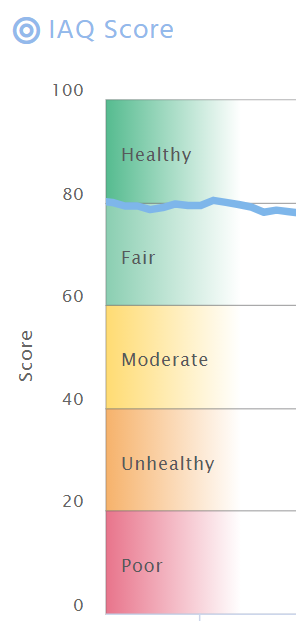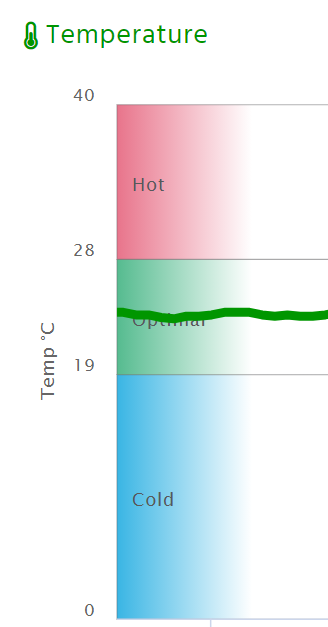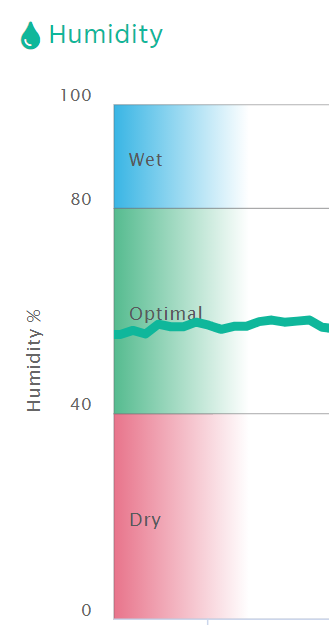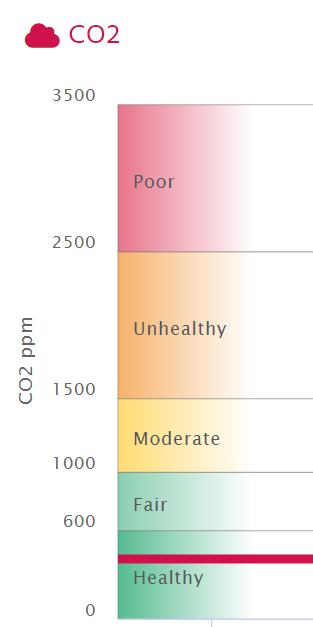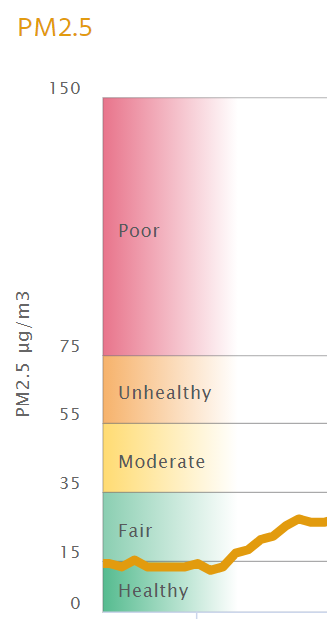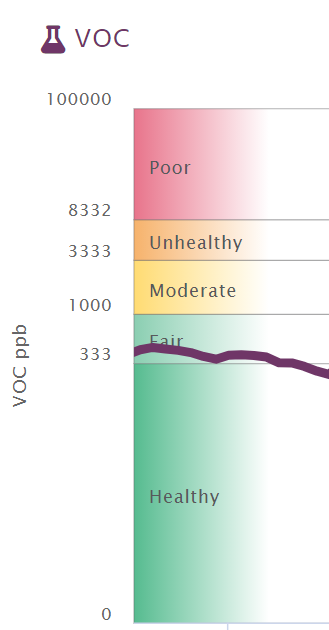What do the different IAQ metrics mean?
The 6 IAQ metrics are colour-coded to indicate your indoor well-being.
The key to improving IAQ is finding a balance between good ventilation and preventing outdoor pollutants from entering your space. The American Society of Heating, Refrigerating and Air-Conditioning Engineers (ASHRAE) recommends a minimum ventilation rate of 15 Cubic feet per minute per person (7 liters/second/ person) for classrooms.
Score
The overall score is an easy-to-view summary of your overall indoor air quality on a scale of 1-100. This is calculated by accounting for temperature, relative humidity, CO2 levels, PM2.5 and PM10 levels and volatile organic compounds in the air. The higher the score, the better the IAQ.
Temperature
Temperature index is designed to show you the optimum indoor temperature range for productivity and well-being. A 2016 study by the Helsinki University of Technology shows that optimal output at work is between 21 to 22 degrees Celsius. Cross referencing with the most energy efficient air conditioning setting, the optimal indoor temperature range is set between 19 to 28 degrees Celsius.
Relative humidity
Indoor humidity greatly affects respiratory health and productivity. Humidity beyond 80% encourages fungal growth in buildings. Humidity below 40% will cause dust particles to become airborne more readily, impacting those suffering from allergies and asthma.
Make good use of ventilation or air conditioner to keep your humidity at an optimal level.
(Reference: http://www.euro.who.int/__data/assets/pdf_file/0017/43325/E92645.pdf?ua=1)
CO2
CO2 levels can significantly affect productivity levels. High levels of CO2 causes drowsiness and difficulties in concentration. The US Environmental Protection Agency recommends maintaining CO2 concentration below 1000ppm for classrooms in use. This can also keep body odors at bay.
(Reference, P.43: https://www.epa.gov/sites/production/files/2014-08/documents/reference_guide.pdf )
Particulate Matters (PM 2.5)
PM 2.5 describes dust particles with 2.5 micrometers or less in diameter. It is produced by vehicle engine emissions and can be deposited deep into our lungs, and is known to increase the risk of death for prolonged exposure. In order to reduce risks towards your respiratory health, the WHO recommends annual mean exposure below 10 μg/m3 for PM2.5.
(Reference, P.9:
https://apps.who.int/iris/bitstream/handle/10665/69477/WHO_SDE_PHE_OEH_06.02_eng.pdf?sequence=1)
Chemicals
Volatile Organic Compounds (VOCs) refer to a diverse group of chemicals that are both manmade and naturally occurring. Prolonged exposure can cause headaches and irritate the respiratory tract. To minimize indoor exposure, reduce the use of aerosol sprays, deodorants and adhesives like super glue. Use permanent markers, correction ink, printers under good ventilation.

